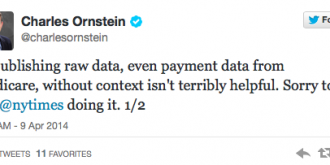The worldwide market for coronary stents is estimated to be greater than $7 billion, with annual growth estimated at more than 5%. The largest factor in the growth of this market is found in the aging of populations in developed countries. This has resulted in a growth rate for PCI procedures of roughly 3%–5% overall. The advent of percutaneous coronary intervention with stenting revolutionized treatment protocols for patients with cardiovascular disease. The availability of stents gave cardiovascular surgeons the opportunity to treat more patients more effectively. The strongest area of growth is currently drug-eluting stents, which after their introduction, quickly overshadowed the growth in bare metal stents. However, after clinical trial results were released in 2006 showing that bare metal stents had outperformed drug-eluting stents (DESs), the market for DESs took a severe hit with many physicians backing away from the newer technology and choosing to implant bare metal stents instead. Combined with manufacturing issues, both Johnson & Johnson/Cordis and Boston Scientific (the only two competitors on the U.S. market) saw significant drops in sales by year-end. However, the market bottomed out in 2007, aided in part by more positive study results. Data presented at the European Society of Cardiology meeting showed that in a 35,000-patient Swedish registry, patients receiving DESs are not at a higher risk of dying or suffering a heart attack as compared to patients receiving bare metal stents. While DESs do present a small increased risk of late-stent thrombosis after the first year, this is offset by better outcomes in the early months after implantation. Although clinical data therefore buttressed the prior evidence that the longer term outcomes were positive, the market for DESs encountered a downward trend driven in part by lingering doubt among clinicians and healthcare systems about the relative efficacy and safety of DESs and in part by the economic climate that punished the higher premiums for DES versus bare metal stents. As the economy has subsequently stabilized, the downward pressure on prices and the strong clinical outcomes data have sustained DES markets, at least until better interventional options emerge, whether those are absorbable stents, drug eluting balloons or other options.
Excerpted from Report #C45, “Worldwide Market for Drug-Eluting, Bare and Other Coronary Stents, 2008-2017.







